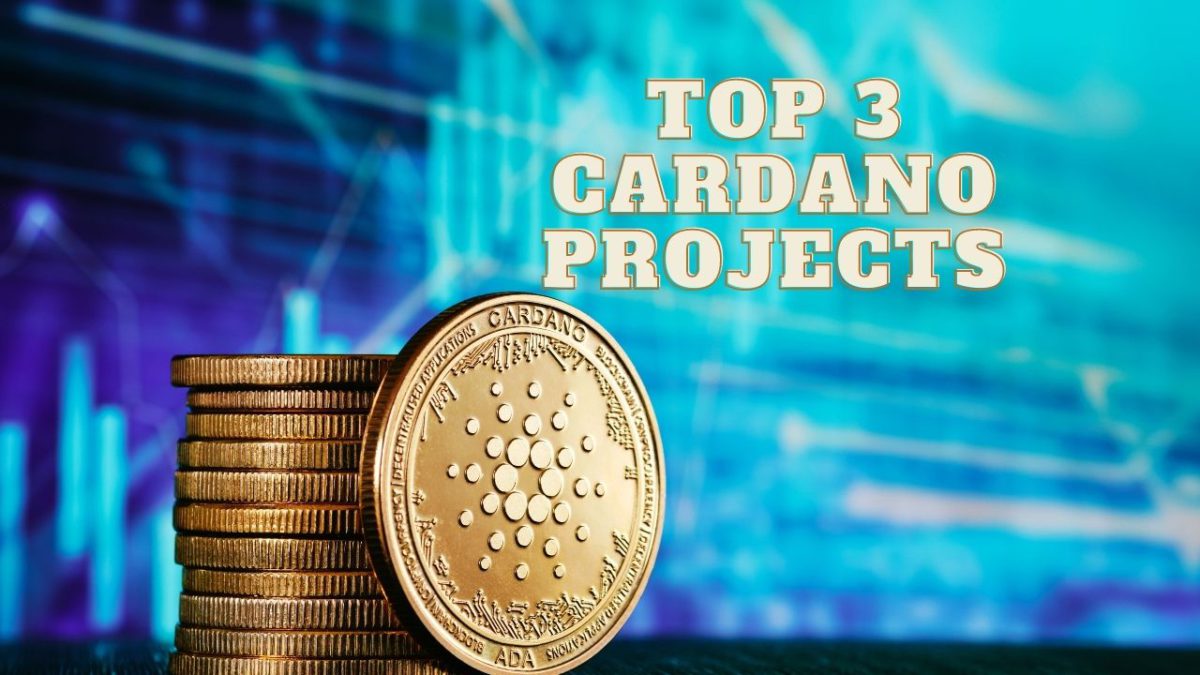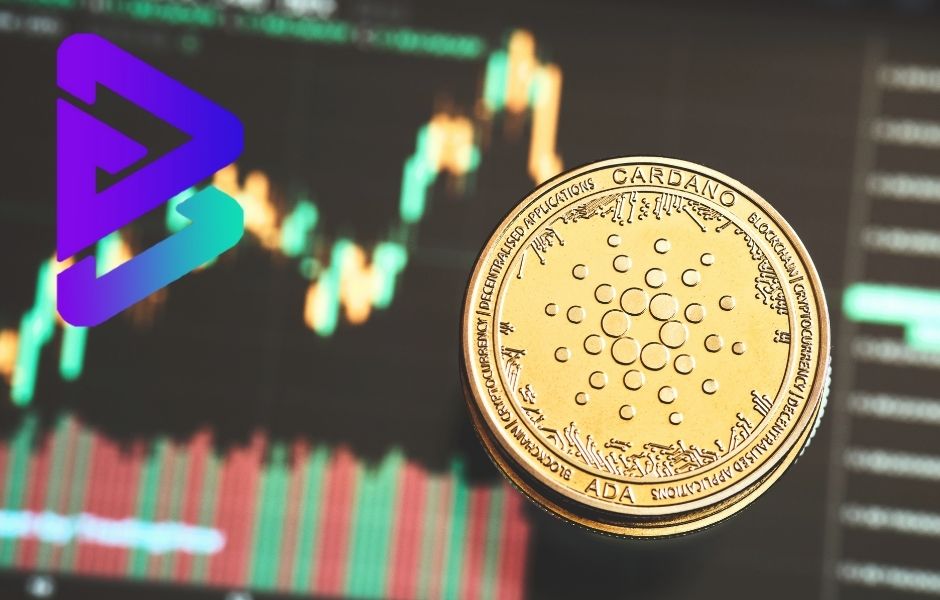DeFi in Web3: Role of Defi in the Future Development of Amazing Web3 Sectors
Decentralized Finance, or DeFi, has emerged as a critical component of the broader movement towards Web3, the next iteration of the internet built on decentralized and blockchain-based technologies. DeFi refers to a system where traditional financial services, such as lending, borrowing, trading, and earning interest, are provided on decentralized networks without the need for centralized intermediaries like banks or brokers.
As Web3 continues to evolve, DeFi in web3 is positioned to play an instrumental role in shaping various sectors within this new digital economy. This article explores how DeFi fits into the broader context of Web3, its key innovations, and how it could transform industries like finance, gaming, real estate, and social media.
Understanding Web3 and DeFi
Before delving into the role of DeFi in Web3, it’s essential to understand what Web3 encompasses.
- Web1 was the static, read-only version of the internet (1990s-2000s) that allowed users to browse information but with limited interaction.
- Web2, the current version, emphasizes user-generated content, interactivity, and centralized platforms, such as Facebook, Google, and Amazon.
- Web3, in contrast, seeks to decentralize control by using blockchain technology to give users ownership of their data, assets, and online interactions.
DeFi, a subset of Web3, democratizes access to financial services by removing intermediaries and using smart contracts to automate transactions. DeFi protocols operate on decentralized networks, often using Ethereum or other blockchains to enable a range of financial services accessible to anyone with an internet connection.
DeFi’s Core Innovations
DeFi introduces several critical innovations that differentiate it from traditional finance (TradFi):
- Smart Contracts: These are self-executing contracts where the terms are written into code. They allow for trustless transactions, eliminating the need for intermediaries.
- Decentralized Exchanges (DEXs): Platforms like Uniswap and SushiSwap enable peer-to-peer trading of cryptocurrencies without relying on a central authority.
- Yield Farming and Staking: Users can earn interest or rewards on their assets by participating in liquidity pools or staking tokens.
- Lending and Borrowing: Platforms like Aave and Compound allow users to lend their assets to others and earn interest or borrow assets using crypto as collateral.
- Stablecoins: Cryptocurrencies pegged to stable assets (like the US dollar), enabling users to transact without the volatility associated with most digital currencies.
These innovations are essential for understanding how DeFi can revolutionize industries as part of the Web3 ecosystem.
DeFi’s Role in the Future of Web3 Sectors
1. Decentralized Finance (Finance 2.0)
The most obvious sector impacted by DeFi is finance itself. DeFi will form the backbone of the Web3 financial system, replacing the need for traditional banks and financial institutions.
- Financial Inclusion: DeFi can provide access to financial services for the unbanked or underbanked populations globally. With just an internet connection, individuals in developing countries can lend, borrow, save, and trade digital assets without needing a traditional bank account.
- Programmable Money: DeFi’s use of smart contracts allows for “programmable money,” which means that financial transactions can be automated based on predefined conditions. This innovation will streamline and optimize processes like insurance claims, payroll, and remittances.
- Transparent and Auditable Systems: All transactions on DeFi platforms are recorded on public blockchains, providing a level of transparency that is impossible with traditional financial systems. This will be a significant shift in how financial audits and oversight are conducted.
- Financial Innovation: DeFi has the potential to create entirely new financial products that were previously unimaginable, such as fractionalized ownership of assets (real estate, stocks, etc.) or novel derivative products built on blockchain data.
In the future Web3 financial system, users will have more control over their assets, be able to access borderless financial services, and participate in global markets without intermediaries.
2. Gaming and NFTs
The gaming sector, especially with the rise of play-to-earn games and Non-Fungible Tokens (NFTs), will increasingly integrate DeFi elements into their ecosystems.
- In-Game Economies: Many blockchain-based games already use tokens as in-game currency, but with DeFi, players can also lend, stake, or borrow assets. Games like Axie Infinity allow players to earn tokens, which can then be traded on decentralized exchanges or used as collateral in DeFi platforms.
- Tokenized Ownership: Players can truly own their in-game assets through NFTs, and these assets can be leveraged in DeFi systems. For example, an NFT representing an in-game item could be used as collateral for a loan.
- Decentralized Virtual Marketplaces: DeFi can power decentralized, peer-to-peer marketplaces where players trade assets without relying on a centralized authority. Smart contracts ensure that transactions are secure and trustless.
- Cross-Game Economies: In the Web3 gaming world, DeFi enables the possibility of interoperable assets, where an NFT earned in one game can be used in another, opening the door to vast interconnected economies across multiple gaming platforms.
By integrating DeFi with gaming, players have more financial freedom and can monetize their gaming experiences more effectively, contributing to a new gaming economy within Web3.
3. Real Estate and Property Ownership
DeFi and Web3 technologies offer exciting possibilities in the real estate sector, particularly through tokenization and decentralized ownership models.
- Tokenized Real Estate: DeFi enables the fractionalization of real estate, where a property can be tokenized into smaller parts. These tokens can represent partial ownership in a property and can be bought, sold, or even used as collateral for loans on DeFi platforms. This lowers the barrier to entry for real estate investments, allowing smaller investors to participate in the market.
- Smart Contracts for Property Transactions: Property transactions are often slow and expensive due to the involvement of brokers, lawyers, and regulatory bodies. With DeFi and smart contracts, property sales and leases can be executed automatically once conditions are met, significantly reducing transaction times and costs.
- Decentralized Mortgage Platforms: DeFi could disrupt the mortgage industry by allowing people to take out loans using their digital assets or tokenized real estate as collateral. Without the need for a centralized bank, these decentralized mortgage platforms could offer more competitive interest rates and greater access to financing.
- Rental Income on the Blockchain: With DeFi, property owners could receive rental income directly into their digital wallets through smart contracts. Tenants can pay their rent in cryptocurrencies, and landlords can stake or invest that income in other DeFi protocols to earn passive income.
DeFi’s integration into the real estate sector will democratize property ownership, simplify transactions, and create more liquid and dynamic property markets.
4. Social Media and Content Platforms
Web3 social media platforms aim to give users ownership of their data, content, and interactions, and DeFi will play a crucial role in monetizing these assets.
- Content Monetization: Current social media platforms (Web2) centralize content ownership and monetize user data. In contrast, Web3 social platforms like Lens Protocol allow users to own their content and data as digital assets. DeFi can enable these users to monetize their content more effectively, for example, by staking tokens earned from content creation or receiving micro-payments through smart contracts for each interaction.
- Decentralized Advertising: DeFi can disrupt the advertising industry by enabling decentralized ad networks where advertisers and content creators engage directly. Smart contracts can facilitate payments for ad impressions or clicks in real time without intermediaries, ensuring that content creators are compensated fairly.
- Social Tokens: DeFi protocols allow creators to issue social tokens, which represent a form of currency for their community. These tokens can be traded, used to vote on decisions, or staked to earn rewards. This transforms fan engagement into a dynamic financial ecosystem where both creators and their followers benefit.
With DeFi’s support, Web3 social media platforms will allow users and creators to have a more direct stake in the financial rewards of the content they produce, reshaping the future of social networks.
5. Supply Chain and Commerce
DeFi’s potential also extends to the supply chain and e-commerce sectors, where decentralized systems can streamline processes and reduce inefficiencies.
- Supply Chain Financing: Traditional supply chain financing often involves intermediaries like banks that provide loans to businesses based on invoices or future revenue. With DeFi, supply chain participants can access decentralized liquidity pools to finance their operations without needing traditional financial institutions. Smart contracts can automate payments based on delivery milestones or performance metrics.
- Tokenized Goods and Tracking: Using DeFi, physical goods can be tokenized as digital assets on the blockchain. These tokens can then be tracked throughout the supply chain, ensuring authenticity, reducing fraud, and providing real-time data on the origin, handling, and ownership of products.
- Decentralized Marketplaces: DeFi can enable decentralized e-commerce platforms where buyers and sellers interact directly, without the need for centralized platforms like Amazon or eBay. Payments, escrow services, and dispute resolution can all be handled automatically via smart contracts, lowering costs for both parties.
In a DeFi-enabled Web3 supply chain, businesses will have more transparency, improved liquidity options, and lower operational costs, leading to more efficient global commerce.
Challenges and Risks for DeFi in Web3 Development
While DeFi holds immense potential for transforming Web3 sectors, several challenges remain:
1. Regulation
The decentralized nature of DeFi makes it difficult for governments to regulate effectively. As DeFi grows, regulators face challenges in applying existing financial regulations to decentralized systems that operate globally and without central authorities. Key regulatory challenges include:
- Jurisdictional Issues: DeFi platforms often operate across multiple jurisdictions, making it challenging to enforce regulations that vary from one country to another. This can create a regulatory arbitrage where platforms exploit gaps in regulatory oversight.
- Compliance: DeFi protocols are typically governed by code rather than traditional legal structures, making it difficult to enforce compliance with financial regulations such as anti-money laundering (AML) and know-your-customer (KYC) requirements. Regulators are struggling to apply these standards to decentralized systems that lack a clear central entity.
- Consumer Protection: Traditional financial regulations are designed to protect consumers from fraud and market manipulation. In DeFi, where smart contracts execute transactions automatically and without intermediaries, there are fewer safeguards against vulnerabilities and malicious actors. Ensuring consumer protection in a decentralized environment is a significant challenge for regulators.
As DeFi continues to evolve, finding a balance between innovation and regulatory oversight will be crucial. Regulators will need to develop new frameworks that address the unique characteristics of decentralized finance while fostering growth and protecting users.
2. Security Risks
DeFi platforms rely on smart contracts to automate and execute financial transactions. While smart contracts offer efficiency and transparency, they also introduce several security risks:
- Smart Contract Vulnerabilities: Bugs or flaws in smart contract code can lead to severe security vulnerabilities. Exploits in DeFi protocols have resulted in substantial losses, as seen with high-profile attacks on platforms like Compound and Poly Network. Ensuring the security of smart contracts through rigorous testing, audits, and bug bounty programs is essential.
- Decentralized Oracles: DeFi platforms often rely on decentralized oracles to provide external data, such as price feeds, to smart contracts. If oracles are compromised or provide inaccurate data, it can lead to incorrect contract execution and financial losses. Ensuring the reliability and security of oracles is critical for maintaining trust in DeFi systems.
- Phishing and Scams: DeFi platforms are also susceptible to phishing attacks and scams. Malicious actors may create fake DeFi projects or phishing websites to steal funds from unsuspecting users. Educating users about security best practices and implementing robust security measures can help mitigate these risks.
Addressing security concerns will be a key challenge for DeFi platforms as they strive to build trust and ensure the safety of users’ funds.
3. Scalability
Scalability remains a significant challenge for DeFi platforms. As the number of users and transactions grows, DeFi platforms must handle increased demand without compromising performance or security. Key scalability issues include:
- Network Congestion: High transaction volumes can lead to network congestion and higher fees, as seen with the Ethereum network during periods of intense DeFi activity. DeFi platforms built on Ethereum may face challenges related to scalability and high gas fees.
- Layer 1 and Layer 2 Solutions: Solutions such as Layer 2 scaling solutions and alternative Layer 1 blockchains aim to address scalability issues. Layer 2 solutions like Optimistic Rollups and zk-Rollups can improve transaction throughput and reduce fees by processing transactions off-chain and settling them on-chain. DeFi platforms need to integrate and adopt these solutions to enhance scalability.
- Interoperability: As DeFi platforms proliferate, interoperability between different blockchains and DeFi protocols becomes crucial. Cross-chain solutions and decentralized bridges are being developed to enable seamless interactions between various networks, but achieving robust interoperability remains a work in progress.
Scaling DeFi platforms to accommodate growing demand while maintaining performance and security will be an ongoing challenge.
4. User Experience
The complexity of DeFi platforms can pose barriers to widespread adoption. Many DeFi applications require users to interact with complex interfaces and understand intricate financial concepts. Key user experience challenges include:
- Onboarding: New users may find it difficult to navigate DeFi platforms and understand how to use them effectively. Simplifying onboarding processes and providing user-friendly interfaces can help improve accessibility.
- Education: Users need to be educated about the risks and benefits of DeFi, as well as how to use platforms safely. Providing clear educational resources and support can help users make informed decisions and avoid costly mistakes.
- Integration: Integrating DeFi services with traditional financial systems and user-friendly applications can enhance the overall user experience. Efforts to bridge the gap between DeFi and traditional finance will be important for driving mainstream adoption.
Improving user experience will be crucial for attracting and retaining users in the DeFi space.
5. Economic and Market Risks
DeFi is subject to broader economic and market risks that can impact its development and stability. Key risks include:
- Market Volatility: The cryptocurrency market is highly volatile, and price fluctuations can affect DeFi protocols that rely on digital assets. For example, sharp declines in the value of collateralized assets can trigger liquidation events and impact the stability of lending platforms.
- Liquidity Risks: DeFi platforms depend on liquidity providers to facilitate trading and lending. Changes in market conditions or shifts in liquidity can affect the availability and cost of liquidity. Ensuring sufficient liquidity and managing liquidity risks will be important for maintaining the stability of DeFi platforms.
- Economic Incentives: DeFi platforms often rely on economic incentives to attract participants, such as yield farming rewards and staking incentives. However, these incentives can create unsustainable economic models if not carefully managed. Ensuring that economic incentives align with the long-term sustainability of DeFi protocols is essential.
Addressing economic and market risks will be important for ensuring the resilience and stability of DeFi systems.
Also, read – NFTs In Web3 Ecosystem: Top 10 Amazing Ways It Is Redefining Digital Ownership and Value
Conclusion
DeFi holds tremendous potential for transforming the Web3 ecosystem by providing decentralized financial services that are accessible, transparent, and efficient. However, several challenges must be addressed to realize its full potential. Regulatory uncertainty, security risks, scalability issues, user experience barriers, and economic risks pose significant hurdles for DeFi’s development.
As the DeFi space continues to evolve, it is essential for developers, regulators, and users to work collaboratively to address these challenges. By focusing on robust security practices, scalable solutions, user-friendly interfaces, and sustainable economic models, the DeFi ecosystem can overcome these obstacles and drive innovation in the Web3 world.
The future of DeFi in Web3 will depend on its ability to adapt and address these challenges while fostering an inclusive and resilient financial ecosystem.
Stay informed with daily updates from Blockchain Magazine on Google News. Click here to follow us and mark as favorite: [Blockchain Magazine on Google News].
Get Blockchain Insights In Inbox
Stay ahead of the curve with expert analysis and market updates.
latest from tech
Disclaimer: Any post shared by a third-party agency are sponsored and Blockchain Magazine has no views on any such posts. The views and opinions expressed in this post are those of the clients and do not necessarily reflect the official policy or position of Blockchain Magazine. The information provided in this post is for informational purposes only and should not be considered as financial, investment, or professional advice. Blockchain Magazine does not endorse or promote any specific products, services, or companies mentioned in this posts. Readers are encouraged to conduct their own research and consult with a qualified professional before making any financial decisions.

 Bitcoin
Bitcoin  Ethereum
Ethereum  Tether
Tether  XRP
XRP  Solana
Solana  Dogecoin
Dogecoin  USDC
USDC  Lido Staked Ether
Lido Staked Ether  Cardano
Cardano  TRON
TRON  Avalanche
Avalanche  Chainlink
Chainlink  Wrapped stETH
Wrapped stETH  Toncoin
Toncoin  Sui
Sui  Wrapped Bitcoin
Wrapped Bitcoin  Shiba Inu
Shiba Inu  Hyperliquid
Hyperliquid  Stellar
Stellar  Polkadot
Polkadot  Hedera
Hedera  WETH
WETH  Bitcoin Cash
Bitcoin Cash  LEO Token
LEO Token  Uniswap
Uniswap  Litecoin
Litecoin  Pepe
Pepe  Wrapped eETH
Wrapped eETH  NEAR Protocol
NEAR Protocol  Ethena USDe
Ethena USDe  Aptos
Aptos  USDS
USDS  Internet Computer
Internet Computer  Aave
Aave  Cronos
Cronos  POL (ex-MATIC)
POL (ex-MATIC)  Ethereum Classic
Ethereum Classic  Mantle
Mantle  Render
Render  MANTRA
MANTRA  Monero
Monero  WhiteBIT Coin
WhiteBIT Coin  Dai
Dai  Bittensor
Bittensor  Artificial Superintelligence Alliance
Artificial Superintelligence Alliance  Arbitrum
Arbitrum  Ethena
Ethena 



